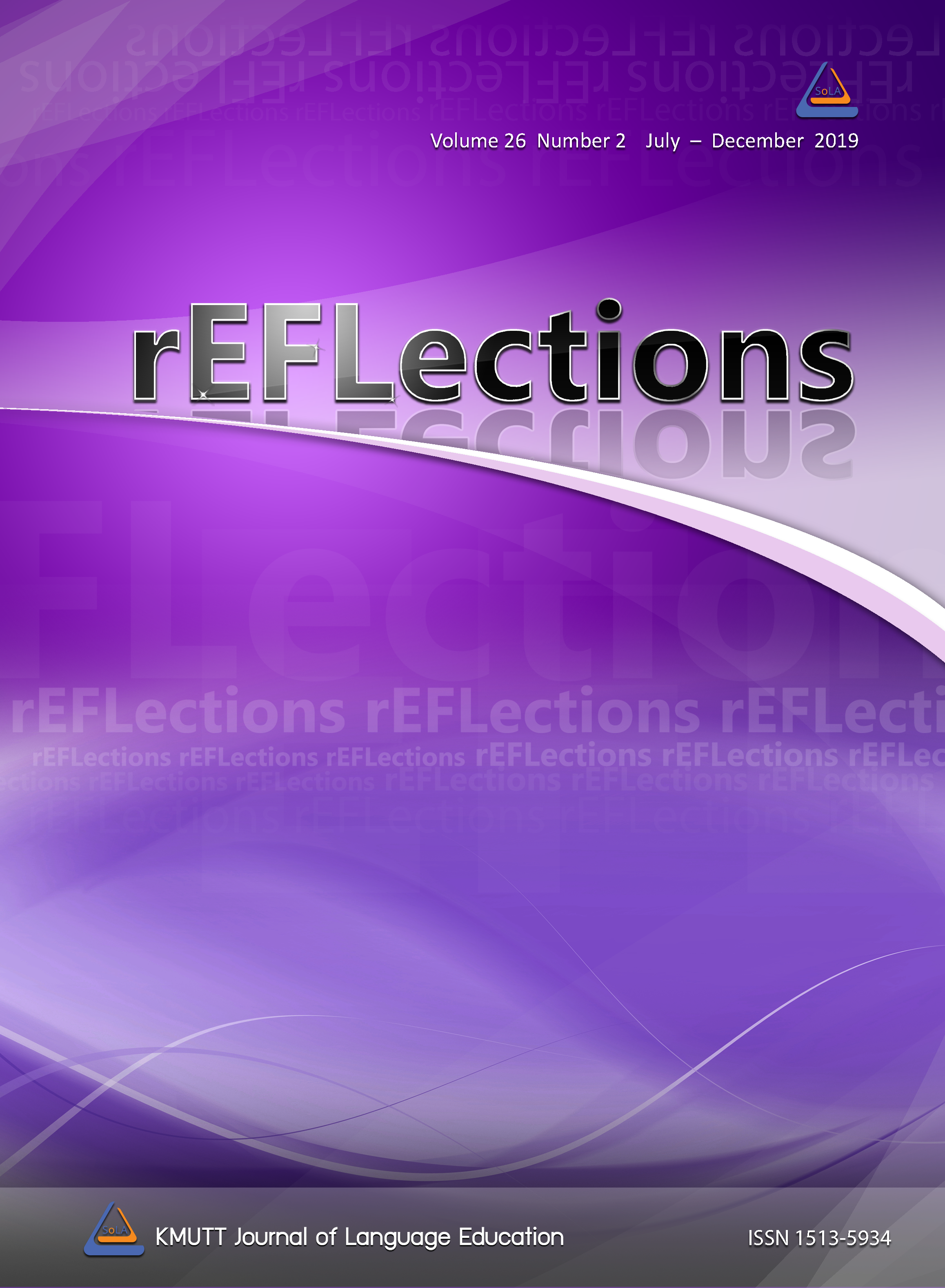The Development of Narrative Macrostructure of Thai Children
Main Article Content
Abstract
The present article aims to examine the development of storytelling ability of Thai children. The Thai Frog Story corpus, consisting of a total of 50 narratives by 4-, 6-, 9-, 11- and 20-year-old participants, is used as data for this study. Three main components of narrative macrostructure are employed as the framework for analysis: onset, problem and resolution. Results find that elementary children have shown significant acquisition of narrative macrostructure since the age of 9. In relation to percentage of acquisition, it is found that ‘problem’ is the easiest component to be recognized, followed by ‘onset’ and ‘resolution, respectively. More specifically, it is found that 4- to 6-year-old children tend to rely on immediate contexts and existing components in particular pictures. Accordingly, they fail to recognize the relationship among the protagonists and settings of the story. Moreover, they cannot keep the main plot along continuously until the end.
Article Details
References
A survey on reading of Thai population 2017. National Statistic Office of Thailand.
Berman, R. A., & Slobin, D. I. (1994). Relating events in narrative: A crosslinguistic developmental study.
Hillsdale, NJ: Erlbaum.
Bliss, L., McCabe, A., & Miranda, A. E. (1998). Narrative assessment profile: Discourse analysis for school-age children. Journal of Communication Disorder, 31, 347-363.
Brooks, P. J. (2014). Encyclopedia of language development. New York: SAGE Publications.
Carmiol, A. M., & Sparks, A. (2014). Narrative development across cultural contexts: Finding the pragmatic in parent-child reminiscing. In D. Matthews, (Ed.), Pragmatic development in first language acquisition (pp.279-293). Amsterdam: John Benjamins.
Childhood education curriculum 2017. (2017). Ministry of Education.
Freytag, G. (1894). Freytag’s technique of the drama: An exposition of dramatic composition and art. An authorized translation from the 6th German edition by Elias J. MacEwan. Chicago: Scott. Foresman.
Gorman, B., Bingham, G. E., Fiestas, C. E., & Terry, N. P. (2016). Assessing the narrative abilities of Spanish-speaking preschool children: A Spanish adaptation of the narrative assessment protocol. Early Childhood Research Quarterly, 36, 307-317.
Halliday, M. A. K., & Hasan, R. (1976). Cohesion in English. London, England: Longman.
Justice, L. M., Bowles, R., Pence, K., & Goose, C. (2010). A scalable tool for assessing children’s language abilities within a narrative context: The NAP (Narrative Assessment Protocol). Early Childhood Quarterly, 25, 218-234.
Kelly, K. R., & Bailey, A. L. (2012). Becoming independent storytellers: Modeling children’s development of narrative macrostructure. First Language, 33(1), 68-88.
Labov, W., & Waletzky, J. (1967). Narrative analysis: Oral versions of personal experience. In J. Helm (Ed.), Essays on the verbal and visual arts (pp.12-44). Seattle: University of Washington Press.
Mayer, M. (1967). Frog, Where Are You? New York: Dial Press.
Pinto, G., Tarchi, C., & Bigozzi, L. (2016). Development in narrative competences from oral to written stories in five- to seven-year-old children. Early Childhood Research Quarterly, 36, 1-10.
Piyapasuntra, S. (2009). The development of syntactic complexity in Thai children’s narratives. MANUSYA: Journal of Humanities, Special Issue No.17, 58-74.
Ratitamkul, T. (2010). Referential choices in narratives of 4-year-old Thai-speaking children. MANUSYA: Journal of Humanities, 13(1), 44-59.
Reese, E., Sparks, A., & Suggate, S. (2012). Assessing children’s narrative. In E. Hoff (Ed.), Research methods in child language: A practical guide (pp.133-148). Wiley-Blackwell.
Stein, N. L., & Glenn, C. G. (1982). An analysis of story comprehension in elementary school children. In W. Friedman (Ed.), The developmental psychology of time (pp.255-282). New York, NY: Academic.
Yangklang, P. (2003). The development of serial verb constructions in Thai children’s narratives. (M.A. Thesis). Department of Linguistics, Faculty of Arts, Chulalongkorn University.
Zlatev, J., & Yangklang, P. (2004). A third way to travel: The place of Thai in motion-event typology. In S. Strömqvist, & L. Verhoeven. Relating events in narrative: Typological and contextual perspectives (pp.159-190). New Jersey: Lawrence Erlbaum Associates.
Zlatev, J., & Yangklang, P. (2018). Thai Frog Story. Retrieved from https://childes.talkbank.org/browser/index.php?url=Frogs/Thai-Zlatev/

